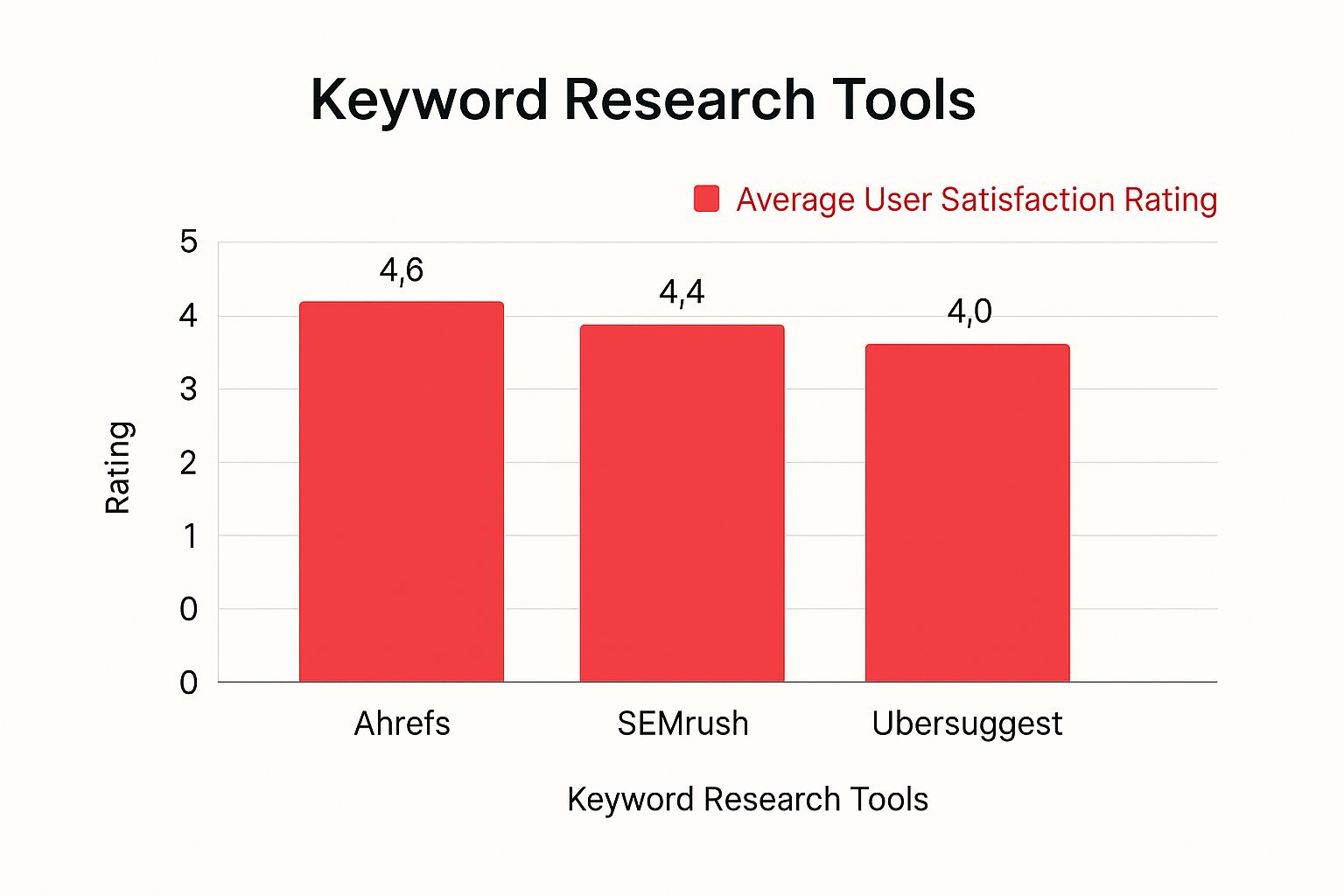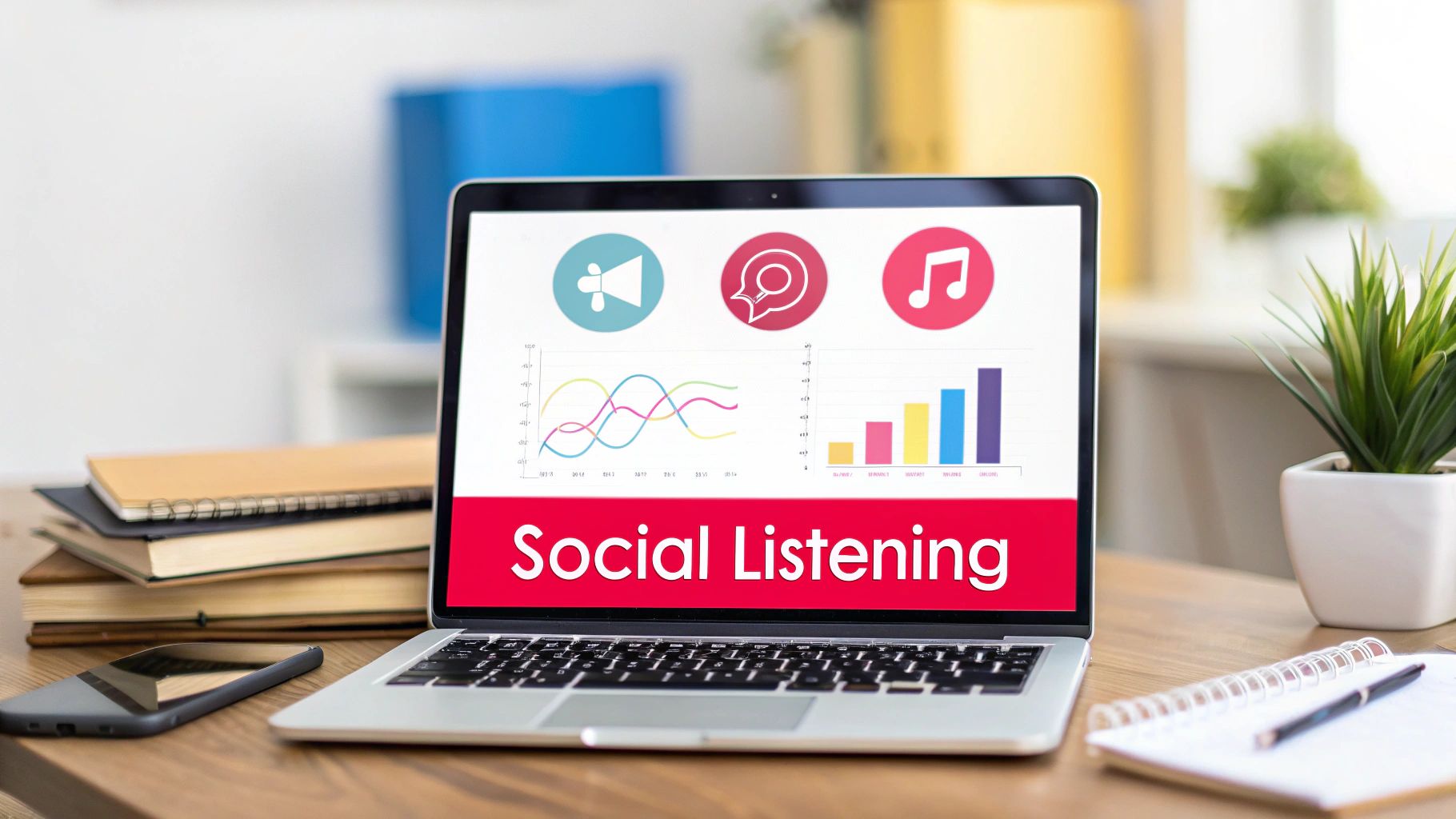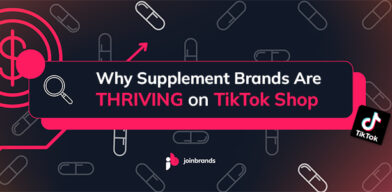 A Guide to Omnichannel Marketing Strategy
A Guide to Omnichannel Marketing Strategy
Table of Contents
Demystifying Microinfluencers: Why They’re Marketing Gold

Microinfluencers, typically with 10,000 to 100,000 followers, hold a unique position in today's marketing landscape. They bridge the gap between expansive reach and genuine audience connection, allowing brands to engage with niche markets in a way that feels authentic and personal. This raises the question: how can businesses find these valuable partners?
The Power of Authenticity
Unlike celebrity endorsements, which can sometimes lack a personal touch, microinfluencers prioritize building real relationships with their followers. They interact directly, responding to comments and fostering a sense of community based on shared values. This cultivates trust and makes their recommendations more persuasive than traditional advertising.
This organic approach to engagement sets microinfluencers apart. Their audience sees them as relatable individuals rather than distant figures, strengthening the impact of their endorsements.
Niche Expertise and Targeted Reach
Microinfluencers often focus on specific areas, from eco-conscious living to the latest in technology. This specialization means their followers are already interested in topics relevant to your brand. This built-in interest creates a highly receptive audience, potentially leading to higher engagement and conversion rates. Imagine a beauty microinfluencer collaborating with a makeup brand; they're speaking directly to an audience eager to explore new products.
This targeted approach allows brands to maximize their marketing efforts by reaching consumers who are already predisposed to their message.
Why Follower Count Isn’t Everything
Understanding the influencer ecosystem is key to finding the right microinfluencers. As of 2024, nano-influencers (those with under 10,000 followers) represent approximately 75.9% of Instagram's influencer population. This statistic underscores the prevalence of smaller-scale influencers and highlights the importance of prioritizing engagement over sheer follower numbers. For a more in-depth look at these statistics, check out this report: Influencer Marketing Benchmark Report.
This shift in focus reflects a growing understanding that genuine influence lies in quality interactions, not just quantity of followers.
Measuring the Impact
The real value of microinfluencers is their ability to deliver measurable results. While follower count plays a role, engagement metrics like comment quality, share rates, and saved content offer a more accurate measure of influence. These metrics reveal the level of true interaction their content generates, providing valuable insights for brands looking for authentic partnerships.
Understanding how to evaluate this true potential is crucial for successful microinfluencer campaigns. This approach enables brands to move beyond vanity metrics and focus on building genuine connections with their target audiences.
Why Brands Are Shifting Their Focus to Microinfluencers
The influencer marketing world is changing. More and more, brands are turning to microinfluencers. This shift is happening for a few key reasons, including changes in how consumers shop and the unique benefits these creators bring to the table. People are getting tired of traditional ads. They want something real, something they can relate to. And that's where microinfluencers shine. They build strong communities based on trust and shared passions.
The Authenticity Advantage
Microinfluencers have a genuine connection with their followers. This allows them to create marketing that feels personal. Their suggestions don't feel like ads; they feel like advice from a friend. For example, a microinfluencer who's passionate about sustainable living can effectively promote eco-friendly products to an audience already interested in that lifestyle. This targeted approach leads to higher engagement and conversion rates than broader, less personalized campaigns.
The growth of the influencer marketing industry itself also contributes to the rise of microinfluencers. The market size has more than tripled since 2020, and experts predict it will reach about $33 billion globally by 2025. This growth shows the increasing demand for targeted, authentic marketing, a need perfectly met by microinfluencers. For more information on this trend, check out these statistics: Global Influencer Market Size Statistics.
Niche Expertise and Dedicated Communities
Brands are starting to see the value in the specialized knowledge and dedicated followers of microinfluencers. These creators often build communities around specific niches, from vegan cooking to gaming. This allows brands to connect with highly engaged audiences who are already interested in what they have to offer.
To understand how brands choose microinfluencers, let's look at a comparison of different influencer tiers. The following table, "Influencer Tiers Comparison," outlines the key differences between these tiers based on follower counts, engagement rates, and typical costs.
| Influencer Type | Follower Range | Average Engagement Rate | Typical Cost Per Post | Authenticity Level |
|---|---|---|---|---|
| Nano-influencer | 1,000 – 10,000 | 5% – 10% | $10 – $100 | Very High |
| Micro-influencer | 10,000 – 50,000 | 2% – 5% | $100 – $500 | High |
| Mid-tier Influencer | 50,000 – 500,000 | 1% – 2% | $500 – $5,000 | Medium |
| Macro-influencer | 500,000 – 1,000,000+ | <1% | $5,000+ | Low |
As this table shows, while macro-influencers have a wider reach, micro and nano-influencers generally boast significantly higher engagement rates and perceived authenticity, often at a lower cost. This makes them attractive partners for brands seeking to connect deeply with specific audiences.

The image above, though focusing on tool selection, mirrors the influencer evaluation process. Just as brands choose tools based on specific needs, they select microinfluencers based on campaign goals and target demographics.
Why Microinfluencers Are the Future of Marketing
This increased focus on microinfluencers represents a major change in marketing. It's a move away from mass marketing and toward building real relationships with customers. By partnering with authentic voices who share their values, brands can build trust, increase engagement, and drive significant results. This emphasis on authenticity and connection is what makes microinfluencers such valuable assets in today's marketing world, setting them up to be key players in campaigns to come.
Uncovering Hidden Gems: Research Methods That Work

Finding the perfect microinfluencers takes more than just a simple search. It requires a well-defined strategy to find those hidden gems whose values truly align with your brand. This means digging deeper than surface-level browsing and using research methods that consistently deliver results. Let's explore some proven techniques for discovering microinfluencers who can genuinely amplify your brand's message.
Manual Research Techniques: Unearthing Authentic Voices
Manual research, although time-consuming, can be very effective. It helps uncover microinfluencers who might be overlooked by automated tools. This hands-on method allows for a richer understanding of a creator's content, audience, and overall brand alignment.
Strategic Hashtag Exploration: Start by identifying relevant hashtags in your niche. If you're a fitness apparel brand, for instance, hashtags like #fitnessmotivation, #gymlife, or #workoutstyle can point you to relevant microinfluencers. Explore these hashtags on platforms like Instagram, TikTok, and YouTube. Don't just glance at the posts; dive into the profiles of the creators using them.
Competitor Analysis: Take a look at your competitors' social media activities. Who are they partnering with? This can provide valuable information about active microinfluencers in your industry with proven track records. Don't directly target influencers with exclusive competitor deals. Instead, look for similar creators who share the same audience but haven't partnered with competing brands.
Community Mining: Engage in online communities relevant to your brand. This might involve joining Facebook groups, participating in relevant subreddit discussions on Reddit, or attending online events in your niche. Look for active members who consistently offer valuable insights and have a strong following within the community. These individuals often wield significant influence, making them excellent potential partners.
Refining Your Search: Defining Key Parameters
Once you understand manual research techniques, it's important to refine your search. This means going beyond generic keywords and adopting a more targeted approach.
Niche Specificity: Focus on keywords and hashtags that are highly specific to your niche. For example, instead of simply using "#food," consider "#veganrecipes" or "#glutenfreebaking" depending on your brand's focus. This targeted approach helps you find microinfluencers whose audience is already interested in your offerings.
Audience Demographics: Keep your target audience's demographics in mind. Are you focusing on millennials interested in sustainable living or Gen Z gamers? Defining your audience helps you narrow your search to microinfluencers who resonate with your ideal customer, ensuring your message reaches the right people.
Platform-Specific Strategies: Adapting to Each Ecosystem
Microinfluencers are active on various platforms, and each platform has unique discovery methods. Understanding these nuances is essential.
Instagram: Use Instagram’s search bar to explore hashtags, locations, and even competitor accounts. Observe engagement metrics like comment quality and save ratios.
TikTok: Explore the "For You" page and the Discover tab to find trending content and up-and-coming creators with high engagement rates and content that aligns with your brand.
YouTube: Use niche-related keywords alongside terms like "review," "tutorial," or "haul" to find YouTubers creating relevant content. Analyze their video views, comments, and subscriber growth.
These tailored strategies let brands capitalize on the specific strengths of each platform, increasing their chances of finding the perfect microinfluencers. This targeted method ensures efficient resource use and better campaign performance.
Troubleshooting Research Roadblocks: Overcoming Challenges
Even with effective strategies, research can sometimes stall. Here are common roadblocks and how to overcome them:
Too Many Results: Refine your search criteria further. Use more specific keywords, narrow location parameters, or filter by engagement metrics to remove irrelevant results, helping you focus on high-quality microinfluencers who truly fit your brand.
No Relevant Results: Slightly broaden your search terms or explore related niches. Consider nano-influencers, who often have highly engaged, niche communities. This expands your pool of potential partners and uncovers hidden gems in adjacent markets.
By understanding these methods and tailoring them to your specific needs, you can effectively uncover those hidden microinfluencer gems and build strong, authentic partnerships. This approach lays the foundation for successful campaigns that resonate with your target audience and deliver tangible results.
Tech-Powered Discovery: Tools That Find Perfect Matches
Manual research is valuable, but using technology can significantly improve your microinfluencer search. Many platforms are designed to help you connect with the right creators efficiently. However, it's important to remember that not every platform offers the same value. Some provide genuine connections, while others can lead to costly mistakes. Let's explore how the right tools can boost your microinfluencer marketing strategy.
Understanding the Landscape of Influencer Discovery Platforms
The number of available platforms can feel overwhelming. Some platforms focus on specific niches, while others offer a broader range of influencers. Understanding these key differences is essential for making the best choice. For example, some tools excel at identifying gaming influencers, while others might specialize in beauty and fashion. Platforms also differ in their pricing models and the features they offer. Some provide in-depth audience analysis, while others offer only basic demographic information.
When researching, consider broader marketing strategies, such as those found in articles like property management marketing ideas. This wider perspective can help you better understand the overall marketing landscape.
Key Features to Look For
A platform's effectiveness depends heavily on its features. Here are some must-haves:
Detailed Influencer Profiles: Look for profiles that offer more than just follower counts. You need insights into content style, audience demographics, and engagement rates.
Advanced Search Filters: The ability to filter by criteria like keywords, niche, location, and engagement metrics is crucial. This narrows your search to creators who align with your brand's needs.
Audience Analysis Tools: Features that provide detailed information about an influencer's audience are essential. Understanding audience demographics, interests, and authenticity allows for more informed decisions.
Campaign Management Capabilities: Some platforms offer integrated campaign management. This can include outreach, contract negotiation, performance tracking, and reporting, all within a single platform.
Evaluating Platform Value vs. Cost
Platform pricing varies widely. Some have free basic plans, while others require significant monthly or annual subscriptions. Weigh the cost against the value offered. A higher price doesn't always guarantee a better fit. If you're a small business, a free or low-cost plan might be sufficient. Larger companies might benefit from the features of premium platforms.
Before we delve into the future of influencer discovery, let's compare some leading tools. The following table highlights key features, pricing, and limitations to help you make an informed decision:
Top Microinfluencer Discovery Tools Comparison
Evaluation of leading platforms for finding and analyzing microinfluencers
| Tool Name | Price Range | Key Features | Best For | Limitations |
|---|---|---|---|---|
| Hypothetical Tool A | $49-$299/month | Advanced search filters, audience demographics, campaign tracking | Businesses with specific niche targets | Limited free plan features |
| Hypothetical Tool B | Free – $99/month | Influencer profiles, basic search, engagement metrics | Small businesses and startups | Lacks in-depth audience analysis |
| Hypothetical Tool C | $199-$499/month | Comprehensive audience insights, competitor analysis, campaign management | Large businesses and agencies | Higher price point |
This table provides a general overview; conducting your own research based on your specific needs is always recommended. Consider factors like your budget, required features, and the size of your business to make the right choice.
AI and the Future of Influencer Discovery
Artificial intelligence (AI) and machine learning are changing influencer discovery. These technologies analyze large amounts of data to evaluate content relevance, audience authenticity, and predict campaign performance. This data-driven approach allows for better microinfluencer selection. AI can uncover subtle patterns in audience behavior and content performance, providing marketers with valuable insights.
Making the Right Choice
Finding the right microinfluencers is essential for successful campaigns. By using technology strategically, brands can improve the discovery process and connect with creators who resonate with their audience. Choose the platform that best aligns with your goals and budget.
Beyond Follower Counts: Evaluating True Potential

Finding potential microinfluencers is just the first step. The real work lies in identifying creators who genuinely align with your brand. This requires looking beyond superficial metrics like follower count and delving into their true potential. This section explores how to effectively evaluate microinfluencers for a successful partnership.
Analyzing Engagement: Beyond the Numbers
While follower count offers a basic overview, engagement is the true indicator of an influencer's impact. This involves examining the quality of interactions, not just the quantity. A microinfluencer with 50,000 followers and a 1% engagement rate is less valuable than one with 25,000 followers and a 5% engagement rate.
Comment Quality: Are comments thoughtful and relevant, or mostly generic emojis? Genuine conversations signal an active and engaged community.
Share Patterns: Do followers regularly share the influencer's content? Sharing signifies valuable content that resonates with the audience and expands organic reach.
Save Ratios: How often is content saved? High save rates suggest followers find the content valuable for future reference, indicating a lasting impression.
These metrics offer a much clearer understanding of audience connection than follower count alone. This deeper analysis helps identify microinfluencers who truly connect with their followers.
Content and Values Alignment: Reflecting Your Brand
After analyzing engagement, evaluate content and values. This involves assessing the influencer's overall style, messaging, and alignment with your brand's core mission. This ensures an authentic and natural partnership.
Content Consistency: Is the influencer's content consistently high-quality, relevant to their niche, and in line with your brand's values? Inconsistent or off-brand content can negatively affect your image.
Creative Alignment: Does their creative style complement your brand's aesthetic and tone? A cohesive visual and messaging style ensures your partnership resonates with the target audience.
Values Compatibility: Do their values align with your brand's core mission and message? Partnerships rooted in shared values build stronger, more authentic consumer connections. This fosters trust and authenticity, resonating with your target audience.
Aligning on these aspects ensures a beneficial partnership, amplifying both the brand and the influencer’s message. This synergy helps create authentic campaigns that resonate with the shared audience.
Spotting Red Flags: Avoiding Costly Mistakes
Recognizing potential red flags is as important as identifying positive qualities. Experienced marketers look for specific warnings.
Engagement Manipulation: Watch for sudden spikes in followers or engagement, potentially indicating purchased followers or bots. Authentic growth is typically gradual and organic.
Misaligned Previous Partnerships: Have they collaborated with brands that clash with your values or target audience? Past collaborations offer insights into their professional conduct and brand compatibility.
Lack of Transparency: Are they transparent about sponsored content? Transparency builds audience trust and is essential for ethical influencer marketing. Honesty is key to long-term, successful relationships.
Early identification of these red flags can save time, money, and potential brand damage. Tools can simplify the influencer search. Explore these social media automation tools to streamline your search and ensure your chosen microinfluencers genuinely represent your brand.
Developing a Systematic Evaluation Process
A systematic approach to microinfluencer evaluation is crucial for consistency and efficiency. A standardized evaluation worksheet streamlines assessment, especially with multiple candidates. Consider including these sections:
Engagement Metrics (Likes, Comments, Shares, Saves): Quantifying engagement allows for objective comparisons.
Content Quality Assessment (Relevance, Creativity, Consistency): Evaluating content ensures alignment with your brand's aesthetic.
Audience Demographics and Interests: Understanding the influencer's audience ensures they match your target demographic.
Values Alignment and Brand Compatibility: Assessing shared values helps build authentic and lasting partnerships.
Consistently applying these criteria ensures strategically sound microinfluencer partnerships that contribute to your overall marketing goals. This approach maximizes your chances of finding microinfluencers who authentically amplify your message and drive impactful results.
Making the Connection: Outreach That Gets Responses
Reaching out to micro-influencers requires a strategic approach. Your initial contact can either spark a fruitful partnership or lead to a dead end. This section explores how to craft outreach that resonates with micro-influencers, leading to positive responses and mutually beneficial collaborations.
Moving Beyond Generic Templates: Personalized Outreach That Works
Generic templates can feel impersonal and often get ignored. Instead, focus on crafting personalized messages that show genuine interest in the micro-influencer and their work. Think of it like networking; you wouldn't approach someone with a canned speech. You'd engage in genuine conversation, showing interest in their background and expertise.
Demonstrate Familiarity: Mention specific aspects of their content that you admire. For example, "I loved your recent post about [topic] – especially your insights on [specific detail]." This shows you've taken the time to understand their work.
Highlight Shared Values: Connect your brand's values with the micro-influencer's content and audience. This alignment strengthens your proposal and makes it more appealing. If you both prioritize sustainability, emphasize this shared value.
Clearly State Your Value Proposition: Briefly explain why this partnership would be beneficial for them. How will collaborating with your brand benefit their audience and their personal brand? What opportunities can you provide?
Respecting Creators' Time: Concise and Actionable Messaging
Micro-influencers are busy individuals. Respect their time by keeping your messages concise and easy to understand. Avoid long, rambling introductions or overly complicated proposals.
Platform-Specific Strategies: Tailor your outreach to the platform you’re using. A direct message on Instagram might be more appropriate than an email for an Instagram-focused influencer. This shows you understand their primary channel.
Clear Call to Action: What do you want the micro-influencer to do? Clearly state your desired next step, whether it's scheduling a call, reviewing your proposal, or responding with their media kit.
Compensation Considerations: Creating Mutual Value
Compensation is a critical aspect of influencer marketing. Beyond monetary payment, think about creative ways to add value for the micro-influencer.
Performance-Based Incentives: Consider offering performance-based bonuses, aligning both your and the influencer's goals towards achieving tangible results. This motivates the influencer to actively contribute to campaign success.
Exclusive Opportunities: Provide exclusive access to new products, events, or brand experiences. This creates a sense of value and encourages deeper engagement with your brand.
Cross-Promotion Opportunities: Offer to promote the micro-influencer on your brand's channels, extending their reach to a new audience. This reciprocal promotion benefits both parties and strengthens the partnership.
Building Long-Term Relationships: From Transactional to Transformative
Don’t treat micro-influencer partnerships as transactional one-offs. Focus on building authentic, long-term relationships that foster continued collaboration.
Open Communication: Maintain open and transparent communication throughout the partnership. Regularly check in with the micro-influencer and be responsive to their questions and concerns.
Mutual Respect and Trust: Treat micro-influencers as valued partners. Respect their creative input and trust their expertise in connecting with their audience. This builds a solid foundation for a long-term relationship.
Value-Added Interactions: Go beyond campaign-specific communication. Engage with their content organically, sharing their posts and offering genuine support. This fosters a sense of community and solidifies the partnership.
By following these outreach strategies, brands can build strong relationships with micro-influencers, leading to authentic and impactful marketing campaigns. This approach prioritizes mutual benefit and creates partnerships that last.
From Partnership to Performance: Measuring What Matters
After securing your microinfluencer partnerships, the next critical step is measuring their impact. This means moving beyond experimental hopes and embracing a data-driven strategy. By understanding the core values of microinfluencer marketing, you can transform campaigns into measurable successes. This involves establishing Key Performance Indicators (KPIs) that accurately reflect the unique value of these collaborations.
Establishing Meaningful KPIs
Microinfluencer marketing, unlike traditional advertising, thrives on authentic connections and audience engagement. Your KPIs should mirror this dynamic. While website clicks and sales are important, they don’t provide a complete picture. Consider these additional metrics:
Engagement Rate: Track likes, comments, shares, and saves to see how audiences interact with influencer content featuring your brand. High engagement indicates content resonance and audience interest.
Reach and Impressions: Monitor the number of unique users who see the content and the total number of times it's displayed. This metric helps assess brand visibility and awareness.
Brand Sentiment: Analyze the tone and context of audience comments to gauge public perception of your brand within the influencer partnership. Positive sentiment strengthens brand trust.
Website Traffic from Influencer Links: Track clicks on unique links given to the influencer. This measures direct traffic from the partnership and helps identify potential customers.
Practical Measurement Frameworks
Using specific frameworks simplifies measurement. One approach is to categorize your KPIs by campaign objective:
Brand Awareness: Focus on reach, impressions, and brand mentions.
Engagement: Track engagement rate, comment quality, and sharing patterns.
Conversions: Measure website clicks, sales, and lead generation.
This structured approach highlights successful campaign aspects and pinpoints areas for improvement. It also informs future campaign adjustments based on valuable performance data.
Addressing Attribution Challenges
Accurately attributing results can be tricky in microinfluencer marketing. The conversion path is often less direct than in traditional advertising. Here are some practical solutions:
Unique Discount Codes/Promo Links: Give each influencer a unique code or link. This allows for precise tracking of conversions originating from their content.
Platform-Specific Tracking Tools: Use built-in analytics dashboards provided by platforms like Instagram and TikTok. This provides valuable data on content reach and engagement directly on the platform.
UTM Parameters: Add UTM parameters to your links to track campaign performance in Google Analytics. This helps analyze website traffic sources related to your influencers and provides supplementary data beyond platform-specific metrics.
These methods ensure accurate tracking without unnecessary complexity, providing essential data without overwhelming analysis.
Combining Quantitative and Qualitative Data
Data is crucial, but don't overlook qualitative feedback. Combine your quantitative data with observations about audience sentiment and the quality of engagement.
Analyze comments for recurring themes and feedback. This offers direct insights into customer perspectives and identifies potential improvements.
Engage directly with followers who mention your brand. This shows brand responsiveness and can yield valuable customer insights.
This combined approach enables continuous improvement in microinfluencer selection and campaign design, leading to more effective partnerships.
Scaling Success: Maintaining Authenticity While Growing
As your microinfluencer program grows, maintaining authenticity is essential. Document successful strategies and develop internal guidelines for future campaigns. However, avoid rigidly enforced templates. Allow flexibility and encourage creativity to preserve the individual style of each partnership. This balance ensures scaled growth while retaining the authentic connection that makes microinfluencers so effective.
Ready to streamline your creator marketing and achieve measurable results? JoinBrands offers an all-in-one platform to connect with a network of over 250,000 creators, including microinfluencers. From AI-powered creator matching and campaign management to performance tracking and Spark Ads activation, JoinBrands empowers brands to accelerate sales and amplify their social presence. Explore the possibilities with JoinBrands.








